
by Martine de Luna (Philippines) | Aug 21, 2014 | 2014, Being Thankful, Domesticity, Life Lesson, Motherhood, Parenting, Philippines, Pregnancy, World Motherhood
 Hello, world moms everywhere!
Hello, world moms everywhere!
Wow, it’s been quite a blogcation, hasn’t it? In other parts of the world, it’s been a long and lazy summer, but for us here in the Philippines, it’s been a wet, sometimes troublesome monsoon season. Earlier in July, one of the worst typhoons hit the city of Manila (where I live), Typhoon Rammasun (called “Typhoon Glenda” by Filipinos). Several of my friends were affected; some even lost parts of their home, roofs, belongings. Others had no electricity for days, some as long as a week.
Yes, it was a difficult July for all of us here in my country. But thankfully, somehow we are alright. If you look around Manila now, there are still signs of damage. However, you will also see the smiles of our people, redolent with possibilities. Despite a harrowing monsoon season, our nation chugs on. Not without inconveniences, of course, but we manage.
I don’t know, but it’s a Filipino trait, I think. I guess our people are so used to hardships and difficulties, sometimes we just wait for them to blow over and just press forward. Of course, this is no excuse for our local government units, those responsible for the effective drainage of the annual heavy rainwaters, and the management of the city’s emergency facilities and evacuation centers. There is much to grumble about. Our government has been “awarded” as number one of the ten most corrupt countries in Asia — obviously something I’m not happy about. 30 million of our people live below the poverty line, meaning about 40 percent of our population has no adequate food rations, shelter, or access to public education.
I could go on about how much must has to change in my country. But I won’t. We have the news and social media for that.
I suppose it is because I am pregnant with my second child. As of this post for World Moms Blog, I am 16 and a half weeks along the way. I had a rocky first trimester, and am just settling into the apparent comforts of the second trimester. I am hoping and praying for a peaceful one! I’ll definitely need it so that I can work and continue to contribute to our family income.
Because I’m expecting, I can’t help but sometimes worry at how different my world is now, compared to when we had Baby #1 (who is now four years old, can you believe?). Things are definitely more challenging now: I’m older, as is my body (biological clock concerns); I seem to be busier now with work, compared to my first pregnancy (because I work from home now); financially, things are more of a concern now, with no healthcare provided for freelancers like me (Dear God, please provide). What concerns me the most is my eldest: Will I be able to show him how to be a good brother? How will we afford two kids? How, how, how?
So right now, I’m trying to see things with more positivity. But it doesn’t stop there. I want to see through to the heart of my apparent setbacks and see what I can make of them. You know what I mean? I want to — as Max Lucado says — probe and explore a problem, and eventually use it.
It’s the same with my outlook on my country. I could nitpick and worry over our national problems, or I could probe, explore and use those problems towards solutions. Every little bit of potential counts!
I want it to be the same with my pregnancy. I have resolved to look my problems in the face and challenge them head on. It’ll be harder because of my condition, but my gumption doesn’t want to fail me! I’m hoping that as I work, homeschool, rest, pray, read, keep my home, et al., that I will be able to create possibilities.
I have to. It has to start with me. Don’t you agree?
How about you, moms? How do you deal with apparent setbacks, in your own world? What do you do to press forward?
This is an original post by Martine de Luna for World Moms Blog. Photo credit goes to the author. Please visit Martine’s blog at www.makeitblissful.com. You can also work with her, if you want to create blogs or websites for your business, just connect with her at www.martinedeluna.com
Martine is a work-at-home Mom and passionate blogger. A former expat kid, she has a soft spot for international efforts, like WMB. While she's not blogging, she's busy making words awesome for her clients, who avail of her marketing writing, website writing, and blog consulting services. Martine now resides in busy, sunny Manila, the Philippines, with her husband, Ton, and toddler son, Vito Sebastian. You can find her blogging at DaintyMom.com.
More Posts

by Ecoziva (Brazil) | Aug 4, 2014 | 2014, Body Image, Brazil, Food, Life Lesson, Maternal Health, Nutrition, Traditions, World Motherhood
 I have been an emotional eater for over two decades and over the past six years or so – when I became fully aware of the matter – I have approached it from multiple angles and using all sorts of techniques. I have worked on issues related to my father’s death when I was a teenager, my relationship with my mother and childhood issues of all sorts. I have undergone several different types of therapy, from the more traditional ones to art therapy, Gestalt therapy, family constellations and energy psychology. I have used EFT, NLP, reiki, homeopathy, ThetaHealing and many other alternative treatments.
I have been an emotional eater for over two decades and over the past six years or so – when I became fully aware of the matter – I have approached it from multiple angles and using all sorts of techniques. I have worked on issues related to my father’s death when I was a teenager, my relationship with my mother and childhood issues of all sorts. I have undergone several different types of therapy, from the more traditional ones to art therapy, Gestalt therapy, family constellations and energy psychology. I have used EFT, NLP, reiki, homeopathy, ThetaHealing and many other alternative treatments.
The positive side has been that I have learned a lot throughout this process. Trying to create a healthier relationship with food has undoubtedly been what has most helped me stay on my personal/spiritual growth path over the past few years.
Emotional eating is a complex issue that can have multiple causes. These causes generally carry specific purposes which might still “serve” the emotional eater in certain ways, such as eating for a sense of comfort or protection or even to “numb” oneself of difficult feelings. Thus, they can be complicated to release unless the person becomes aware of the underlying events that gave food such emotional significance and are able to let go of that.
For instance, it might be that, as a child, someone gave the person something sweet every time he/she was upset, so the person developed the habit of eating sweets every time negative emotions come up. Letting go of that habit would then involve things like: becoming aware of the pattern and how it began, finding ways to heal the inner child that is used to being given sweets instead of the true attention or emotional support they need when negative emotions come up, and realizing that there are now adult ways of dealing with negative emotions.
Additionally, I believe we can only stop emotional eating when we truly want to. It is not like one consciously wants to continue having an unhealthy relationship with food (although one could, as surrender can also be a good tool!) but it can take time to become aware, deal with and let go of the multiple unconscious blocks around the pattern.
In my case, for example, I recognize that I have frequently side stepped certain issues and have not gone as deep as I could in certain treatments. On the other side, respecting our pace and giving ourselves the time to deal with the often painful issues – as opposed to judging ourselves and making ourselves wrong for “failed” attempts – is essential.
In my case, after three years of great improvement, my second pregnancy (which ended up in a miscarriage), followed by the pregnancies and births of my two youngest children, brought my emotional eating back to square one.
It was no surprise to me that pregnancy would once again bring up issues that would be difficult for me to deal with, but I expected that things would get better after the babies were born and began to get older. However, even though my youngest is now 16 months old things have worsened terribly and over the past few weeks I have gained more than 5 kg (11 lbs).
I have still not figured out what is triggering this new fallback, yet while using a combination of the techniques I have learned over the years, a story I hadn’t thought of for many years came to mind. I will tell that story in the next part of this post.
TO BE CONTINUED…
And you? Please share your stories about your relationship with food. Do you interfere in your children’s relationship with food?
This is an original post to World Moms Blog from our writer in Brazil, Ecoziva.
The image used in this post holds a Flickr Creative Commons attribution license.
Eco, from the greek oikos means home; Ziva has many meanings and roots, including Hebrew (brilliance, light), Slovenian (goddess of life) and Sanskrit (blessing). In Brazil, where EcoZiva has lived for most of her life, giving birth is often termed “giving the light”; thus, she thought, a mother is “home to light” during the nine months of pregnancy, and so the penname EcoZiva came to be for World Moms Blog.
Born in the USA in a multi-ethnic extended family, EcoZiva is married and the mother of two boys (aged 12 and three) and a five-year-old girl and a three yearboy. She is trained as a biologist and presently an university researcher/professor, but also a volunteer at the local environmental movement.
More Posts

by Elizabeth Atalay | Jun 24, 2014 | 2014, Africa, Awareness, Babies, Birthing, Ethiopia, Health, Humanitarian, Maternal Health, Millennium Development Goals, Motherhood, Newborn Health, Pregnancy, Save The Children, Social Good, Third Eye Mom, Travel, World Moms Blog, World Voice
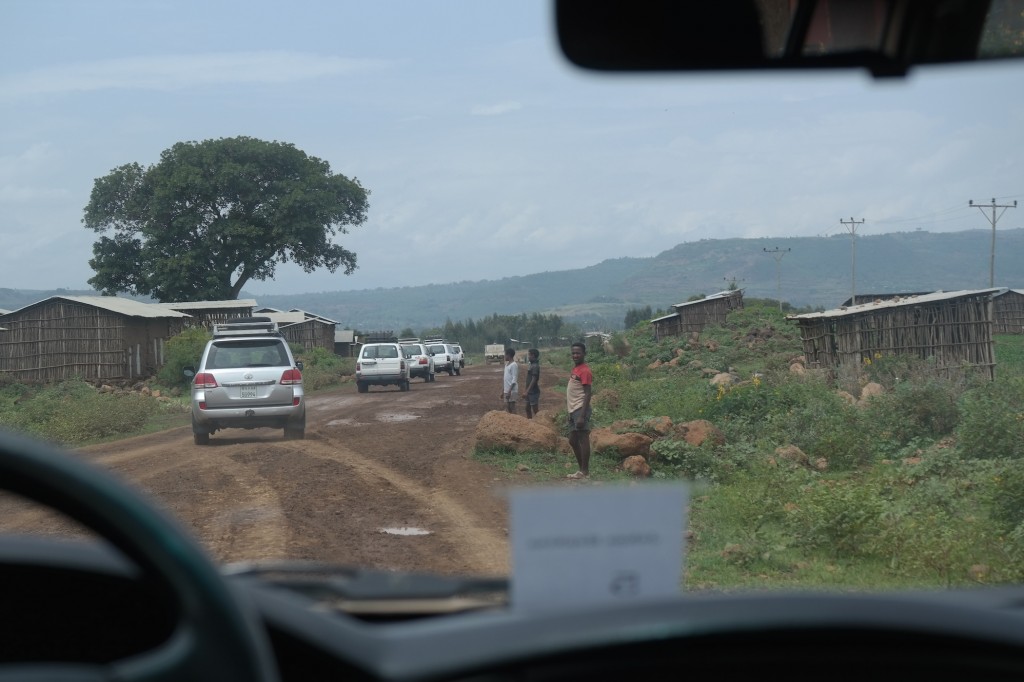
We had just spent the night at the source of the Blue Nile River. Lake Tana sits in Bahir Dar, Ethiopia, and as our caravan of Land Cruisers wove through the countryside from Bahir Dar to Mosebo I took in deep gulping breaths of sweet fresh Ethiopian air. The lush colors of our surroundings looked to me like they had been enhanced in Photoshop in the way that everything seemed to pop. How could I feel this emotional connection to place that was never mine? A place I had never been?
Though this is my first time in Ethiopia, the verdant landscape brought me back to other rural parts of Africa I’d traveled through in my youth, similar topographies that had stayed with me ever since. This time I’d returned to the continent as a new media fellow with the International Reporting Project to report on newborn health. World Moms Blog Editor Nicole Melancon of ThirdEyeMom is a fellow on the trip as well, and last week wrote about our initial overview of maternal and newborn health in Ethiopia. Now we were heading to one of the villages housing a Health Post, which serves the local and surrounding population of approximately 3,500 people.
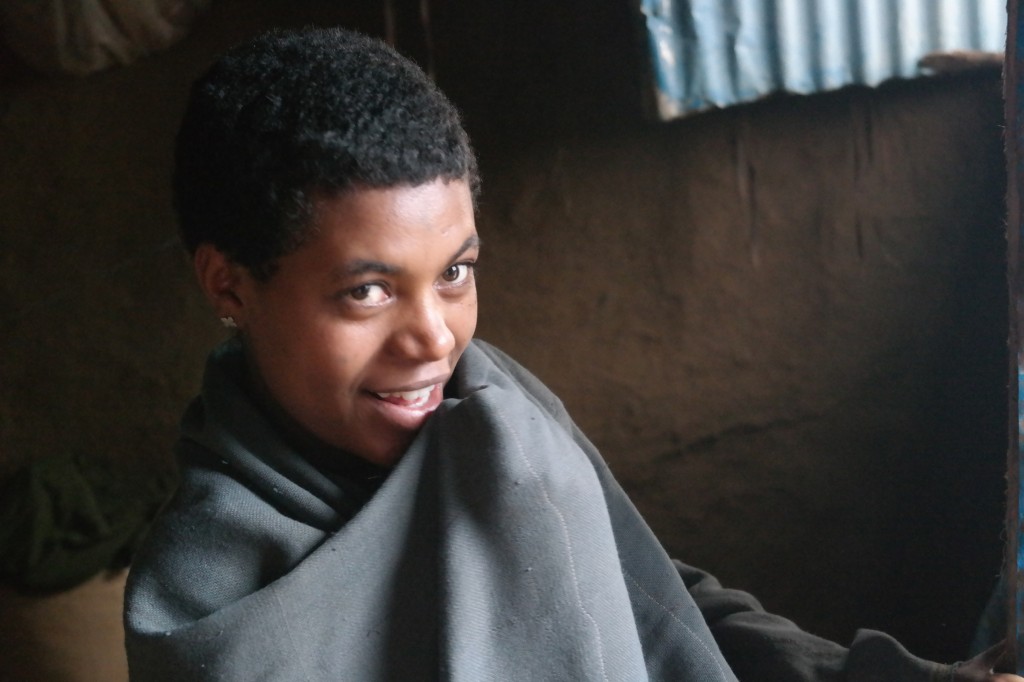
Mosebo Village is part of Save The Children’s Saving Newborn Lives program, and as such is looked to as a model village in the Ethiopian Government’s plan to reduce maternal and newborn mortality. Mosebo is a rural agrarian community that produces wheat, teff and corn. There I met seven-year-old Zina whose mother, Mebrate was about to give birth. Through our translator Mebrate estimated her age to be around 26, and told us that Zina was her first child. For economic reasons she and her husband had waited to have a second. When she had Zina, Mebrate had gone to her parent’s home to give birth, as women in Ethiopia often do. It is estimated that 80% of Ethiopian mothers will give birth in their home, often without a trained health care attendant. Towards the end of Mebrate’s first pregnancy she went to live with her parents as her family instructed, until after the baby was born. In that way her mother could help her deliver, could care for her and the baby, and feed her the traditional porridge after birth. Although there were no complications during her delivery, sadly, many young mothers giving birth at home are not as fortunate. The time period during and around birth are the most vulnerable for the lives of both the mothers and babies. The Saving Newborn Lives Program aims to reduce maternal and newborn mortality beginning with awareness programs and antenatal care on the local level at Health Posts like the one we visited in Mosebo.
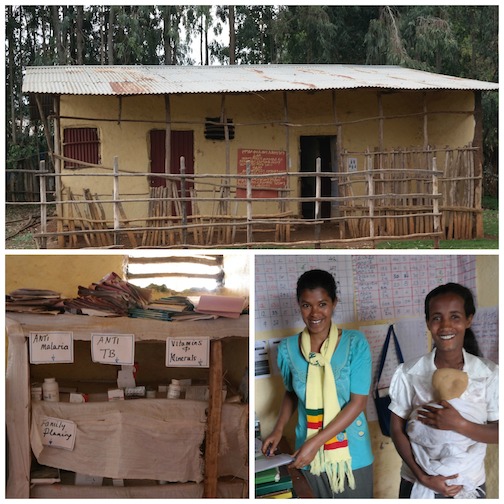
The Mosebo Health Post and Health Extension Workers
We had met Tirgno and Fasika, the two Health Extension Workers at the Mosebo Health Post earlier that day as they showed us the two room interior, and explained their role in improving maternal and newborn health. They work to raise awareness in the community about the importance of antenatal care, and the potential dangers of giving birth at home for both mother and child. Newborn health is interdependent with maternal health, and the most prevalent causes of newborn mortality, infection, Asphyxiation, pre-maturity or low birth weight, and diarrhea can often be avoided with proper care. These days in Mosebo after receiving antenatal care at the Health Post women are then referred to the regional Health Center for deliveries.
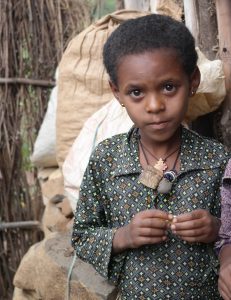
Zina shyly smiled when we ask her how she felt about having a new sibling, she stood straight and tall listening intently as we asked her mother about the babies’ arrival. When Mebrate goes into labor this time, with her second child, she will embark on the walk along rural dirt roads for around an hour to the nearest Health Center to give birth.
Elizabeth Atalay is reporting from Ethiopia as a fellow with the International Reporting Project (IRP). This is an original post written for World Moms Blog.
You can follow all IRP reports by World Moms Elizabeth Atalay & Nicole Melancon at #EthiopiaNewborns

Elizabeth Atalay is a Digital Media Producer, Managing Editor at World Moms Network, and a Social Media Manager. She was a 2015 United Nations Foundation Social Good Fellow, and traveled to Ethiopia as an International Reporting Project New Media Fellow to report on newborn health in 2014. On her personal blog, Documama.org, she uses digital media as a new medium for her background as a documentarian. After having worked on Feature Films and Television series for FOX, NBC, MGM, Columbia Pictures, Warner Brothers, 20th Century Fox, and Castle Rock Pictures, she studied documentary filmmaking and anthropology earning a Masters degree in Media Studies from The New School in New York. Since becoming a Digital Media Producer she has worked on social media campaigns for non-profits such as Save The Children, WaterAid, ONE.org, UNICEF, United Nations Foundation, Edesia, World Pulse, American Heart Association, and The Gates Foundation. Her writing has also been featured on ONE.org, Johnson & Johnson’s BabyCenter.com, EnoughProject.org, GaviAlliance.org, and Worldmomsnetwork.com. Elizabeth has traveled to 70 countries around the world, most recently to Haiti with Artisan Business Network to visit artisans in partnership with Macy’s Heart of Haiti line, which provides sustainable income to Haitian artisans. Elizabeth lives in New England with her husband and four children.
More Posts

by Nicole Melancon (USA) | Jun 17, 2014 | 2014, Ethiopia, Humanitarian, Maternal Health, Newborn Health, Save The Children, World Voice
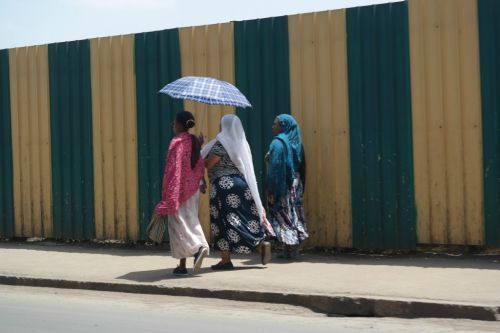
Ethiopia, one of the poorest countries in Africa with a population of 90 million people, stunned the world by achieving the Millennium Development Goal #4 of reducing the mortality rates of children under age 5 by two-thirds well ahead of the 2015 deadline. In a country in which 95% of the population lives outside of an urban center in rural, remote and hard to reach areas and a shocking 80% of women birth at home without a midwife. Health Extension Workers (HEW) have been the key ingredient to Ethiopia’s success. However, sadly the rate of newborn survival in Ethiopia has not shown nearly as much progress.
As an international reporting fellow with The International Reporting Project, fellow World Moms Blog editor, Elizabeth Atalay, and I are in Ethiopia for the next two weeks reporting on newborn health. We will be meeting with a diverse variety of people around the country such as doctors, health officials, mothers, NGOs, midwives and health extension workers to learn about Ethiopia’s maternal, newborn and child health systems, policies and strategies for improving newborn health. Today we had a presentation on maternal, newborn and child health in Ethiopia given by Dr. Abeba Bekele, the Program Manager at Save the Children Ethiopia’s Saving Newborn Lives Program.
Dr. Abeba Bekele is a medical doctor by training yet after spending five years working in the field she saw firsthand some of the tragic problems with maternal care in her country.
Watching as a patient bled to death after delivery, and being unable to save this mother of six, was a turning point for Dr. Abeba. She decided to move to working in public health policy in hope of improving Ethiopia’s poor maternal and child health care system.
Over the years, Dr. Abeba has seen remarkable progress in some areas, but painfully slow progress in other areas in regards to maternal, newborn and child health.
- Over the past 20 years, Ethiopia has reduced child deaths (for children under age 5) by more than two-thirds. In 1990, an estimated 204 children in every 1,000 in Ethiopia died before the age of five. Now that number is closer to 69 in every 1,000.
- While 1- 59 months (i.e. 5 year) child mortality rate is declining 6.1% annually the neonatal rate (first 28 days of life) is only declining 2.4% annually.
- Since the year 2000, Ethiopia has reduced its lifetime risk of maternal death from 1 in 24 to 1 in 67.
Although these figures are encouraging, there is also much work to be done in improving maternal, newborn and child health in Ethiopia. One of the main issues that is making maternal and newborn mortality rates difficult to tackle is the fact that over 80% of women in Ethiopia deliver at home with no trained help. These women give birth assisted by the community birth attendant, with a friend, a neighbor or even by themselves. The best way to save both maternal and newborn lives is to have women give birth assisted by a trained midwife at a health center. In fact the Ethiopian government is strongly encouraging all women to give birth at a health center but there are many obstacles in the way.
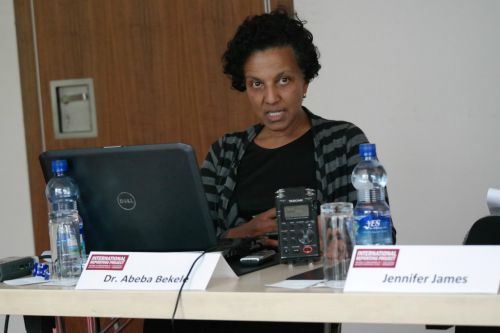
In an effort to improve maternal, newborn and child health, the Ethiopian government has implemented a massive effort of new policies and programs throughout the nation. The biggest success story has been the training and deploying of an army of 34,000 Health Extension Workers (HEW). Implemented in 2005, this massive effort has had remarkable success in saving lives through education, prevention of diseases, and provision of family health services. HEW’s live within the community and are trained and paid by the government to do home visits for an assigned population within their community. HEWs have been successful in cutting child under five deaths significantly as they can check and treat for the biggest child killers like diarrhea, pneumonia and malaria. However, HEWs are not trained as midwives, and can only advise a woman to give birth in a health center. This is an area that must be changed as giving birth by a trained professional in a health center would significantly reduce neonatal and maternal deaths.
Progress also needs to be made in the sheer accessibility and number of health centers. Today there are only 3,500 health centers in Ethiopia for 90 million people. More health centers and hospitals need to be built and more roads to reach the inaccessible areas. More midwives need to be trained and distributed throughout the country. According to the 2012 State of the World’s Midwives report, there is one midwife for every 18,000 people in Ethiopia whereas the World Health Organization recommends there should be one midwife per every 5,000 people in a given country. A lot of work needs to be done but the progress they have made in the past two decades is admirable.
Nicole Melancon is reporting from Ethiopia as a fellow with the International Reporting Project (IRP). This is an original post written for World Moms Blog.
You can follow all IRP reports by World Moms Elizabeth Atalay & Nicole Melancon at #EthiopiaNewborns

Third Eye Mom is a stay-at-home mom living in Minneapolis, Minnesota with her two children Max (6) and Sophia (4). Her children keep her continually busy and she is constantly amazed by the imagination, energy and joy of life that they possess! A world wanderer at heart, she has also been fortunate to have visited over 30 countries by either traveling, working, studying or volunteering and she continues to keep on the traveling path.
A graduate of French and International Relations from the University of Wisconsin Madison, where she met her husband Paul, she has always been a Midwest gal living in Minnesota, Wisconsin and Chicago. This adventurous mom loves to be outside doing anything athletic (hiking, running, biking, skiing, snowshoeing or simply enjoying nature), to travel and volunteer abroad, to write, and to spend time with her beloved family and friends.
Her latest venture involves her dream to raise enough money on her own to build and open a brand-new school in rural Nepal, and to teach her children to live compassionately, open-minded lives that understand different cultures and the importance of giving back to those in need. Third Eye Mom believes strongly in the value of making a difference in the world, no matter how small it may be. If there is a will, there is a way, and that anything is possible (as long as you set your heart and mind to it!).
Visit her on her blog, Thirdeyemom, where she writes about her travels and experiences in other lands!
More Posts
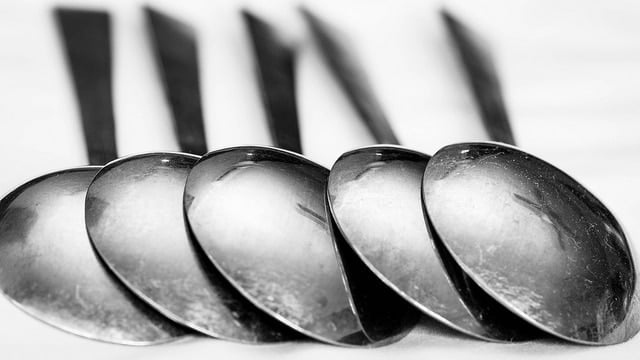
by Olga Mecking | Jun 2, 2014 | 2014, Awareness, Being Thankful, Child Care, Health, Kids, Life Balance, Maternal Health, Me-Time, Motherhood, Netherlands, Parenting, World Motherhood, Younger Children
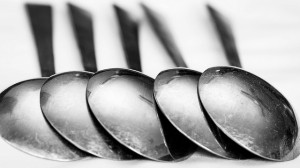 Recently, I’ve been reading about the Spoon Theory (also sometimes called the token theory). The idea is that we’re all given a certain amount of spoons (or tokens) each day—metaphorically of course–to spend on all the things that we need to get done during the day.
Recently, I’ve been reading about the Spoon Theory (also sometimes called the token theory). The idea is that we’re all given a certain amount of spoons (or tokens) each day—metaphorically of course–to spend on all the things that we need to get done during the day.
It is usually applied to explain disabilities or chronic illnesses, which often can’t be seen but still make people’s lives difficult (like Lupus, Chronic Pain or Aspbergers). But I actually think that, without dismissing the experiences of these people, the spoon theory also can be expanded to include moms.
Just think of all the things you have to do during the day, and then imagine doing them without children. You wouldn’t even have to think when you got dressed in the morning. Eating breakfast would be simple and effortless. You’d be able to get out of the house in a matter of minutes and you might even be able to get places on time.
When you’re a mom, suddenly everything takes more time. You don’t only have to make breakfast for yourself, you make it for one, two, three, or more people. Here go three spoons- and I don’t mean the ones you use to eat breakfast.
You want to get out of the house. You put your coat on, your children’s coats on. Your price in spoons depends on the amount of children you have and the season- less children cost less spoons, winter is more expensive than summer.
Whatever you do, whether you are a working mom or a SAHM, you likely will be out of spoons by the end of the day. Some days are better and you may even have a few spoons left. Some days are horrible and you run out of spoons before noon. The unexpected temper tantrum costs a spoon or three. Taking your child to the hospital because he’s sick is another five spoons.
Remember, you only get a certain amount of spoons per day and that amount is limited. You can borrow the spoons from the next day but that could be the very day your child gets sick or when she decides that from now on, she will absolutely refuse to do whatever you ask her to do.
But not all moms are given equal amounts of spoons. Some have less than others. These are the moms who have disabled children. These are single moms with two jobs and no support. These are the moms all over the world living in poverty. They struggle every day to provide the best for their children. Yes, parenting under such circumstances is definitely more spoon-costly.
But it isn’t easy even for a family without such challenges. So what can we do? Spend our spoons wisely. Prioritize.
For example, in my case, perfectly folded laundry isn’t worth a spoon but a nicely prepared dinner most definitely is. We can try to replenish our spoons by getting some me-time. We can remember to sleep. We can get help- whether it’s from family, friends or childcare.
These are the things we can do for ourselves. But there are also things we can do for others. When thinking about how to spend your spoons or tokens, please set aside a certain amount for your fellow moms. You can do it by offering support. Offer a shoulder to cry on, extend your helping hand, say encouraging words.
It may seem like spending your own precious spoons but it is really a kind of investment. Because any price is easier to pay if everyone pitches in.
But, all economic and metaphorical imagery aside, I just want to point out the obvious: motherhood is hard. Let’s be kind to ourselves. And let’s help each other out.
Of course, we don’t really need such theories to explain how hard it it so be a mom. But I thought the spoon theory is a rather good way to illustrate the challenges of motherhood.
What are you thoughts on this? Is it helpful to think of your day in terms of having a limited number of spoons (or tokens) to spend?
This is an original post to World Moms Blog from our Polish writer in the Netherlands, Olga Mecking.
The image used in this post is credited to Nicki Mannix. It holds a Flickr Creative Commons attribution license.
Olga is a Polish woman living in the Netherlands with her German husband. She is a multilingual expat mom to three trilingual children (even though, theoretically, only one is trilingual since she's old enough to speak). She loves being an expat, exploring new cultures, learning languages, cooking and raising her children. Occasionally, Olga gives trainings in intercultural communication and works as a translator. Otherwise, you can find her sharing her experiences on her blog, The European Mama. Also take a while to visit her Facebook page .
More Posts - Website
Follow Me:




by Sarah Hughes | May 30, 2014 | 2014, Family, Kids, Maternal Health, Motherhood, Parenting, Sarah Hughes, USA, Working Mother, World Interviews, World Motherhood, Younger Children
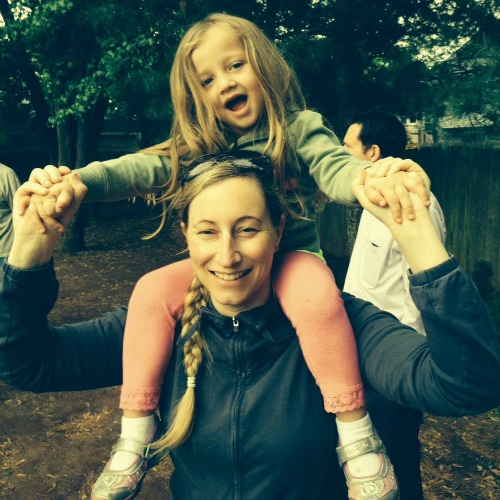
Sarah Hughes has been helping out behind the scenes at World Moms Blog. Read her interview to learn more about our newest contributor in North America! (more…)
Sarah grew up in New York and now calls New Jersey home. A mother of two, Derek (5) and Hayley (2), Sarah spends her days working at a University and nights playing with her children. In her “free” time Sarah is a Shot@Life Champion and a volunteer walk coordinator for the Preeclampsia Foundation. Sarah enjoys reading, knitting, sewing, shopping and coffee. Visit Sarah at her own blog Finnegan and The Hughes, where she writes about parenting, kid friendly adventures and Social Good issues. Sarah is also an editor, here, at World Moms Blog!
More Posts - Website
Follow Me:




 Hello, world moms everywhere!
Hello, world moms everywhere!




















